Why Travel to Cape Soya by Bicycle?
Welcoming the New Year at Japan’s Northernmost Point
As January nears its end, bringing up stories from the holiday season might feel a bit stale, but how did you all ring in the New Year?
Some may have spent the time tidying up for a fresh start. Others might have wrapped up the year with one final ride and taken a well-deserved breather. There are countless ways to spend the year’s end.
Meanwhile, at Cape Soya, the northernmost tip of Hokkaido, travelers from all over Japan—by car, motorcycle, bicycle, and even on foot—gathered, braving the biting cold and huddling together, eagerly awaiting the New Year.
Just thinking about it gives me chills…
This time, I’ll share a glimpse of the unique way people welcome the New Year at Japan’s northernmost point, focusing on cyclists who take part in this chilly tradition.
The report comes from Ontama Negitoro, well-known for articles on Global Ride covering bikepacking adventures and rides around Shikoku. Naturally, Ontama himself braved the freezing cold on a ride to join the New Year’s gathering at Cape Soya.
Ontama Negitoro @negitrobicycle
Table of Contents
1. What is the New Year’s Gathering at Cape Soya?
2. The Crazy Participants
No.1: Hokokara-san from Miyazaki Prefecture
No.2: Fuji-san from Saitama Prefecture
No.3: Ibuki-san from Gunma Prefecture
3. Dawn of the New Year
1. What is the New Year’s Gathering at Cape Soya?
The New Year’s Gathering at Cape Soya is, as the name suggests, an event where people welcome the New Year at Japan’s northernmost point. On January 1st, the city of Wakkanai hosts an event called Hatsuhinode in Teppen (First Sunrise at the Top) at Cape Soya, attracting travelers from all over Japan who come to witness the year’s first sunrise.
However, the conditions at Cape Soya during the year-end and New Year period are severe, with strong winds and snow, and temperatures dropping to around -10°C. This makes it a challenging event that requires thorough preparation and proper knowledge.
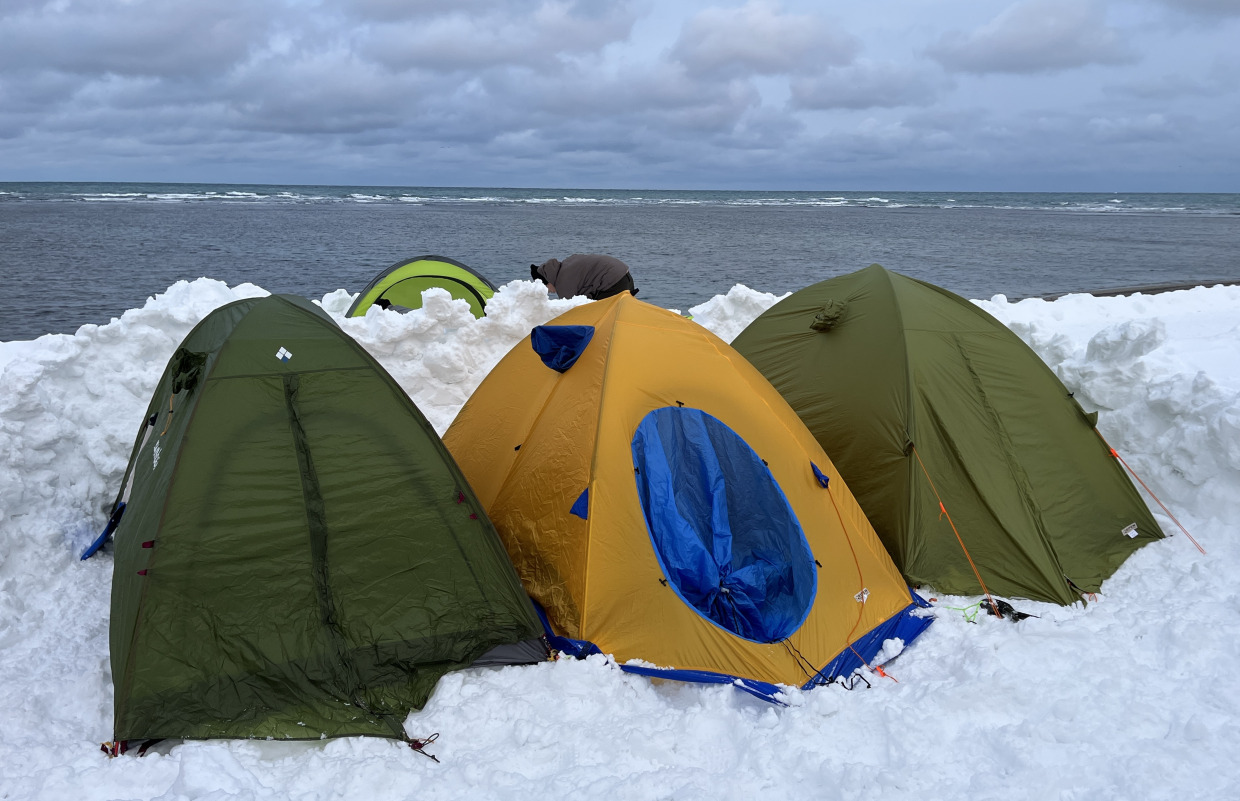
The majority of participants arrive by motorcycle, followed by car, then bicycle, and finally on foot. Those traveling by motorcycle, bicycle, or on foot typically pitch their tents around the cape and wait patiently for the New Year to arrive.
With temperatures at -10°C and relentless northern winds offering no shelter, the conditions are brutally harsh. Yet, an inexplicable festive atmosphere seems to emerge from nowhere, warmly embracing the travelers.
2. The Crazy Participants
This time, I had the chance to speak with some crazy participants who braved Hokkaido’s heavy snowfall and temperatures as low as -20°C to reach Cape Soya by bicycle. Let’s take a look at their unique ways of ringing in the New Year.
No.1: Hokokara-san from Miyazaki Prefecture
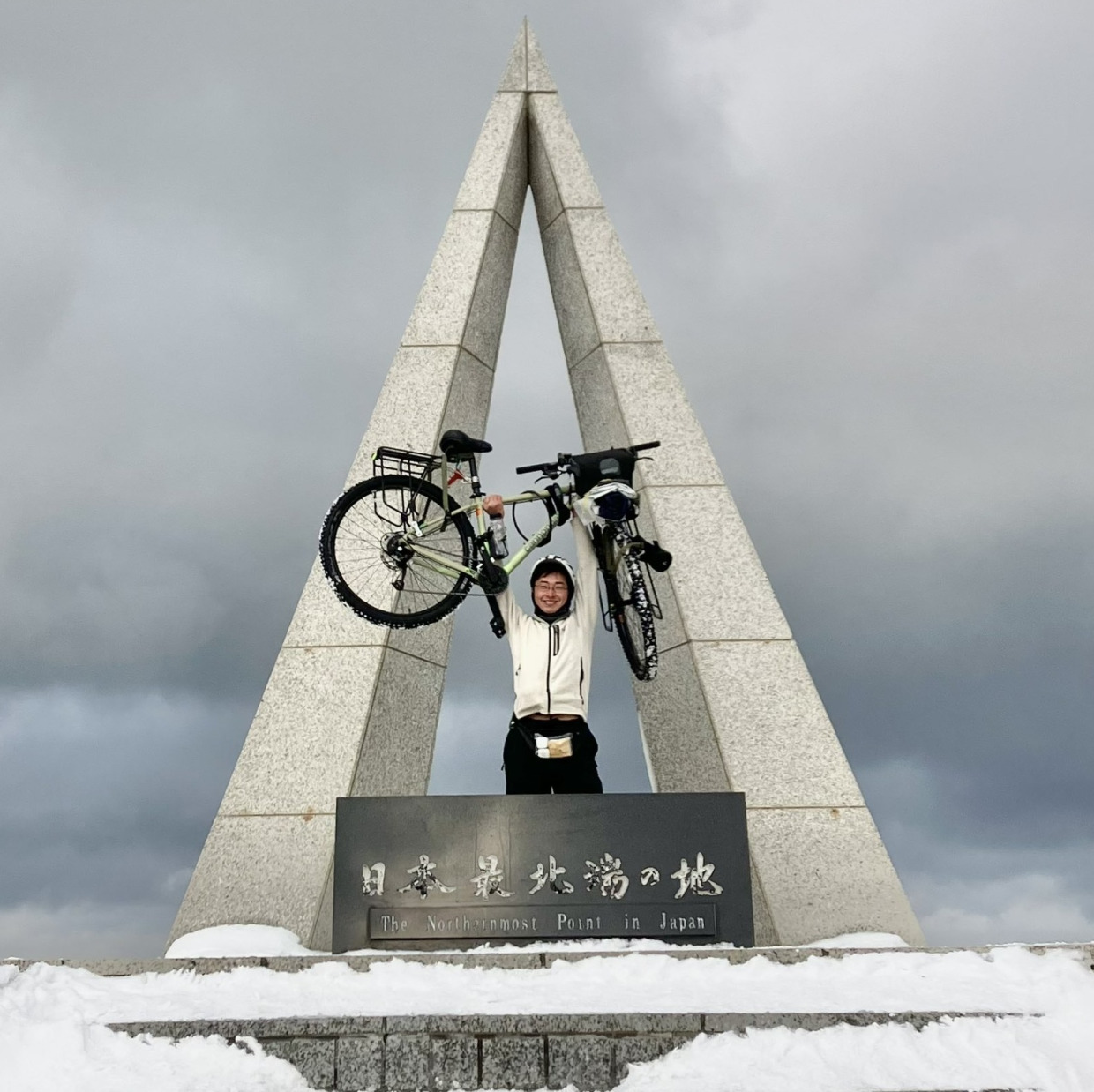
Q. Where did you come from? What was your travel route?
I came from Miyazaki. My route started from Tomakomai, passing through Sapporo and Asahikawa, and then taking National Route 40 to Wakkanai. I reached Wakkanai on Christmas Eve, stayed there for about a week, and then made my way to Cape Soya.
Q. Why do you choose to ride through the harsh winter of Hokkaido?
Two years ago, I completed a bicycle tour around Japan, and the scenery of Hokkaido in the summer was so beautiful that I couldn’t forget it. However, I felt a sense of dissatisfaction knowing only Hokkaido in summer, almost like a complex. That’s why I decided to ride through winter Hokkaido.
Q. Have you been to any other places besides Cape Soya during your winter rides?
Not at all, haha. Since I also do mountain climbing, I had some idea of what the cold and snow would be like. Being from Miyazaki, the idea of riding a bicycle on snow was so out of the ordinary that I couldn’t contain my excitement.
Q. What do you need to be careful about when riding in extreme cold and snow?
Setting up a tent in the snow is one thing. If the tent gets buried by snow while I’m sleeping, there’s a risk of suffocation, so I had to shovel snow every few hours while camping. It was really tough, but it’s a memorable experience.
No.2: Fuji-san from Saitama Prefecture
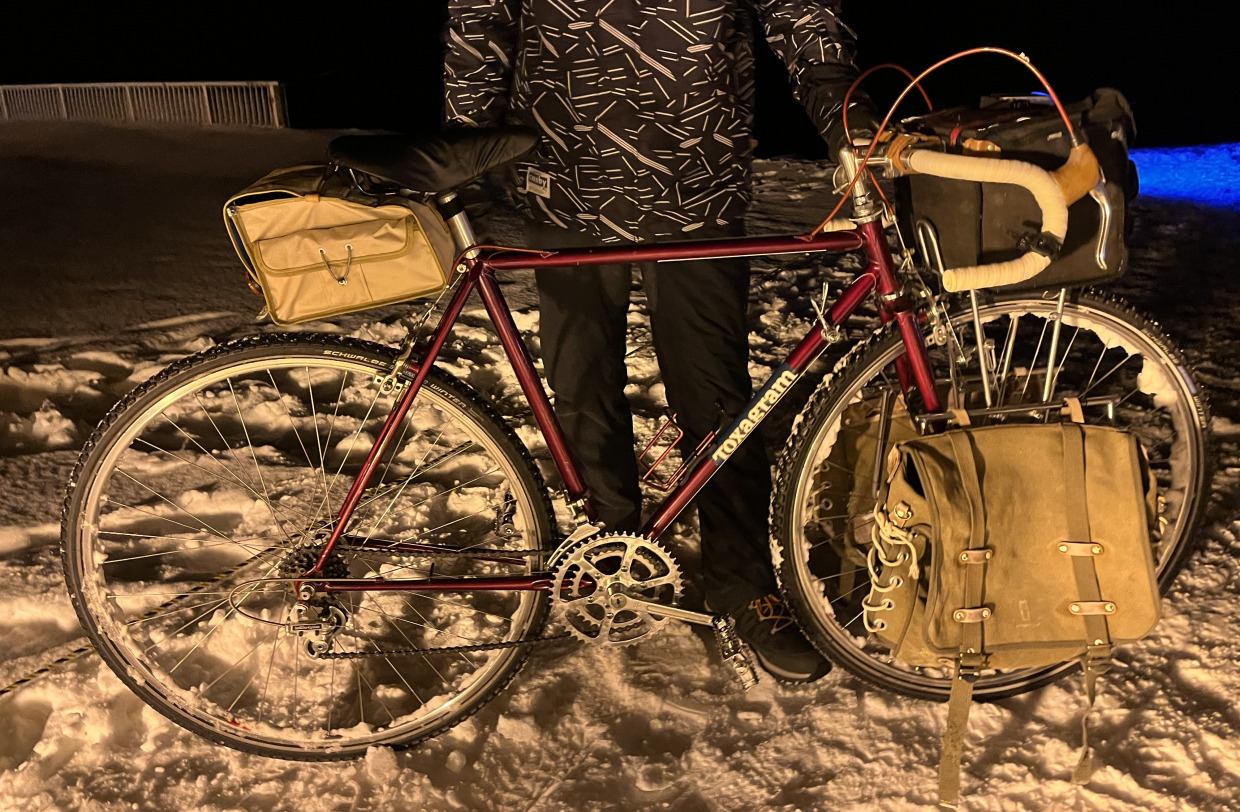
Q. Where did you come from? What was your travel route?
I came from Saitama Prefecture. This trip started from Horonobe Town in Hokkaido, passing through Toyotomi Onsen, and then heading to Wakkanai and Cape Soya.
Q. Why do you choose to ride through the harsh winter of Hokkaido?
I wonder why… Perhaps it’s “to acknowledge myself.” Throughout my time cycling, I’ve always admired the idea of spending New Year’s at Cape Soya. It was something I wanted to do someday. Being able to finally make it a reality feels like it’s connected to building my own confidence.
Q. Have you been to any other places besides Cape Soya during your winter rides?
This is my first time. In preparing to ride through winter Hokkaido, I referred to the records of past travelers and challenged myself to approach it in as much of a classic style as possible.
Q. What do you need to be careful about when riding in extreme cold and snow?
When riding a classic bike (sportif), I made sure to take proper care of the mechanics. I applied grease to the freewheel sprocket to prevent it from spinning freely. I paid particular attention to greasing all parts thoroughly.
Additionally, after actually riding, I realized that having enough tire air volume is essential for snow riding. With narrow tires (35c), I couldn’t reduce the air pressure enough, making riding with a loaded bike on snow unstable. Next time I ride in winter Hokkaido, I plan to use slightly wider tires. While wider tires might provide more security, I want to stick to my style, so I’ll aim for a balance at the limit.
No.3: Ibuki-san from Gunma Prefecture
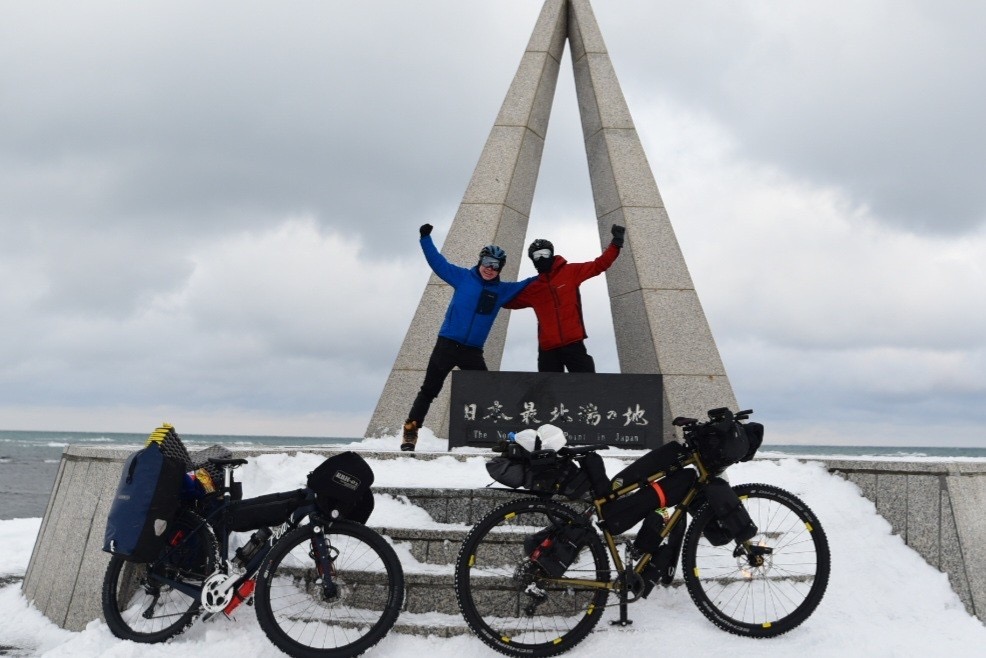
Q. Where did you come from? What was your travel route?
I joined from Gunma Prefecture. I started by meeting Ontama Negitoro at Ikutahara Onsen in eastern Hokkaido, then made my way to Cape Soya, threading through the inland areas on the Okhotsk side.
Q. Why do you choose to ride in the harsh winter of Hokkaido?
Perhaps it’s easy to understand if I say, “To meet strong people.”
I’ve ridden through winter Hokkaido more than five times. Cape Soya gathers many seasoned travelers with incredible experience. Being able to meet and interact with travelers who are on par with or even have more impressive experiences than my own is one of the highlights of spending New Year at Cape Soya.
I met Ibuki-san at last year’s New Year’s gathering at Cape Soya, and we are riding together on this trip.
Q. Have you been to any other places besides Cape Soya during your winter rides?
I’ve ridden through the snow-covered beauty of Mount Utsukushigahara in Nagano Prefecture. The harshness at times reveals a stunning beauty that I’ve become addicted to.
Q. What do you need to be careful about when riding in extreme cold and snow?
Especially with cars. We are merely guests in Hokkaido, which has graciously accepted us. We make sure to ride and select routes in a way that doesn’t inconvenience the locals who live in such a harsh environment. Given the tough conditions, it’s important to do thorough research beforehand and be prepared. Never push yourself too hard.
How was it?
In addition to the three participants mentioned above, I had the chance to speak with many others. Each person had their own purpose.
Some were riding to face themselves.
Others were seeking to meet new friends.
As if to celebrate the intersection of each new journey, at 6 AM, fireworks went off, greeting the sunrise in celebration.
3. Dawn of the New Year

The dawn of the new year has arrived.
We all watch the first sunrise together.
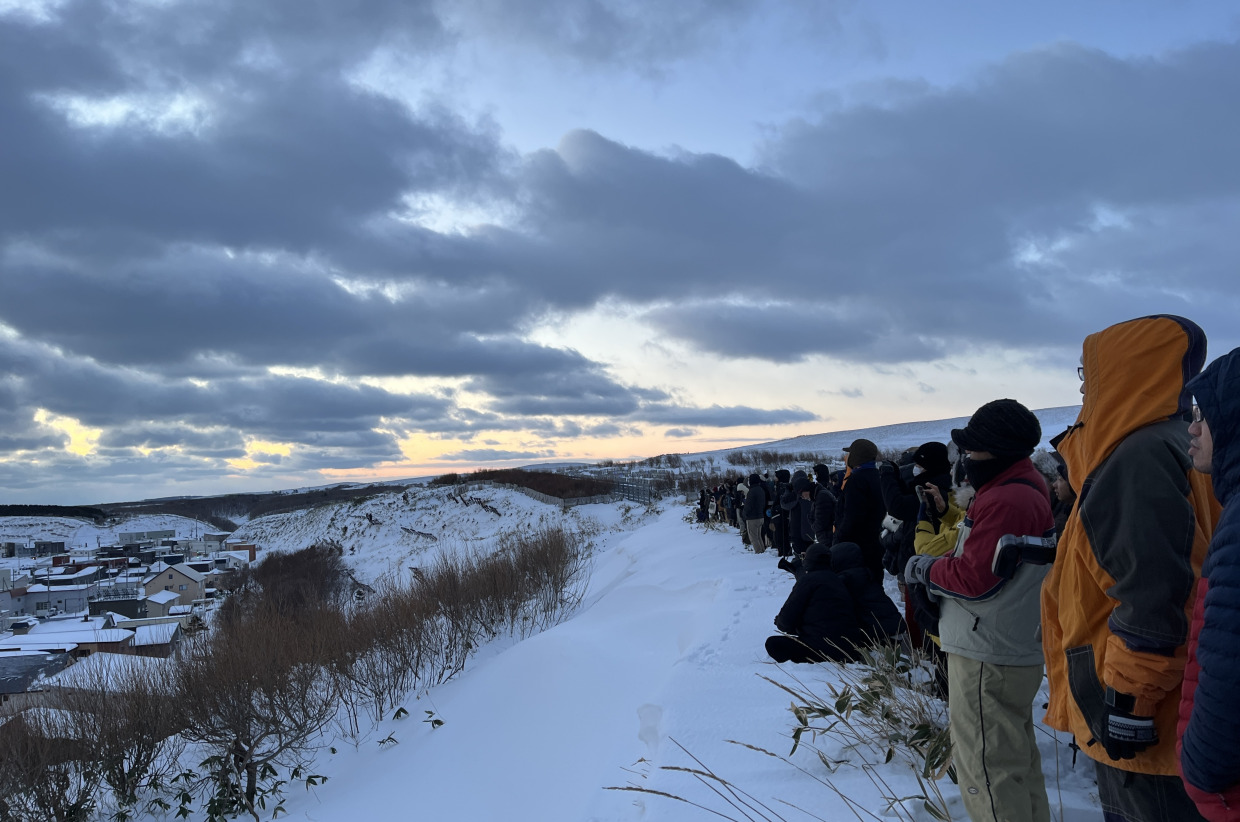
Everyone, let’s meet again somewhere. Stay safe!
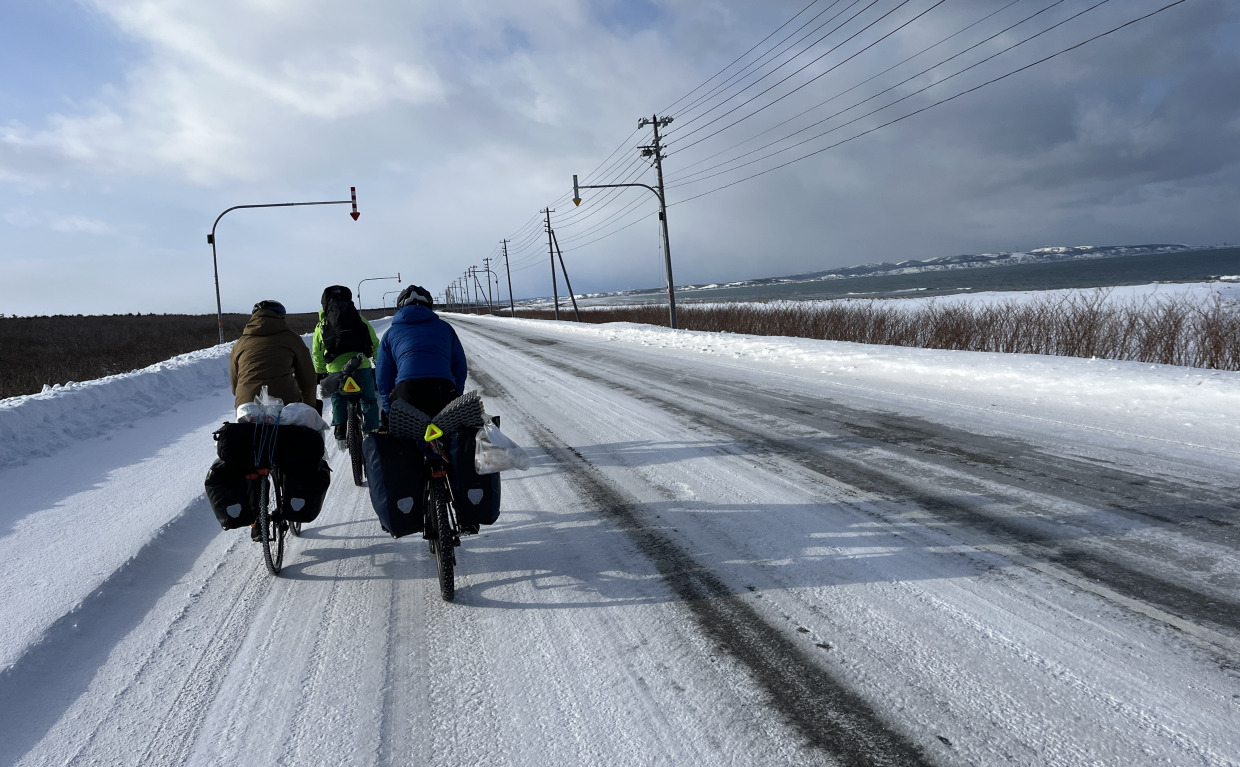
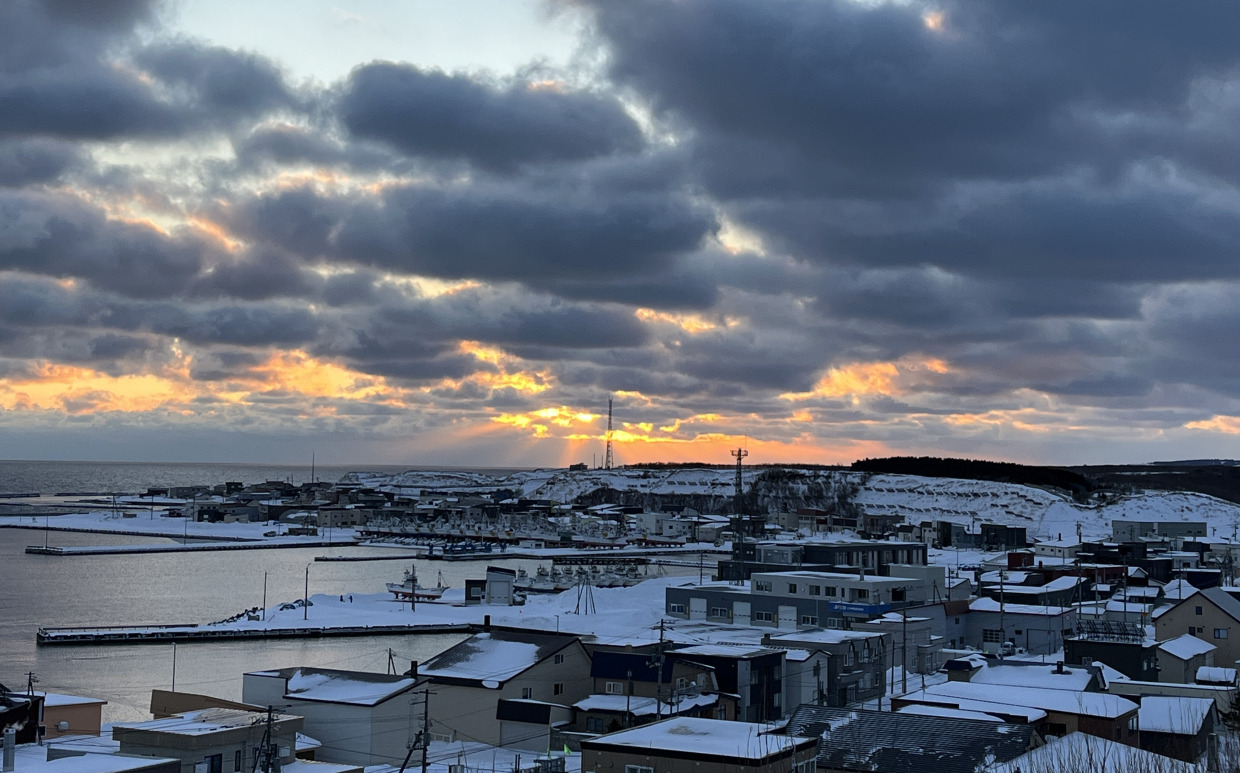
Text_Ontama Negitoro
References
https://www.north-hokkaido.com/feature/detail_32.html
🚲Articles by Ontama Negitoro
The Bike Travel Professional’s Guide Series
● Domestic Japan Edition 01
● Domestic Japan Edition 02
Gravel Enthusiasts Ride Ancient Routes
● Kii Mountain Range, Kumano Kodo, Off-Road
● Kumano Sanzan Pilgrimage, Exquisite Tuna, Cycle Train
Riding the 1000km Around Shikoku
● An Ultra-Distance Journey by a Gravel Enthusiast
Why Travel to Cape Soya by Bicycle?
● Welcoming the New Year at Japan’s Northernmost Point
Watch Out for Makibishi (Caltrops) !
● A Short Cycling Trip to the Ninja Village
To Taste Mackerel at Wakasa Bay!
A Parent-Child Ride Along the Saba(Mackerel) Kaido
Profile
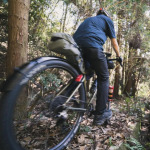
Ontama Negitoro@negitrobicycle
Hailing from Sakai City, Osaka Prefecture, Onsen Tamago Negitoro is a company employee, writer, and the administrator of the blog “Bicycle Travel Research Society.” They have been involved in bike camping tours from a young age, having traversed almost all of Japan’s prefectures. During their university years, they were part of a bicycle club and visited over 10 countries solo by bicycle. With extensive experience in bike travel, they undertook an extreme bike camping tour across Hokkaido during the harsh winter of 2023. Recently, they have focused on long-distance rides, earning the SR title in a brevet in 2023 and completing a 1900km brevet during the 2024 Golden Week. They aim to complete PBP and LEL in the future and are also planning to actively pursue overseas bike camping tours.